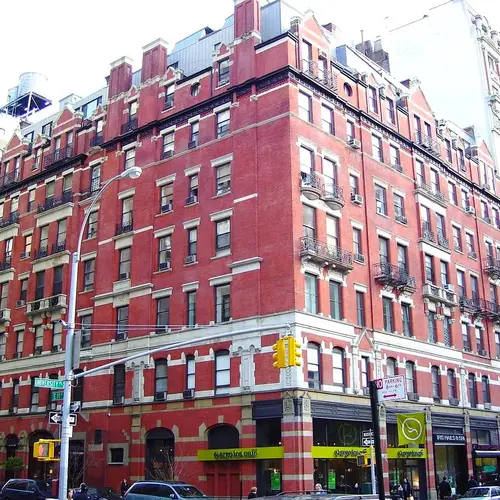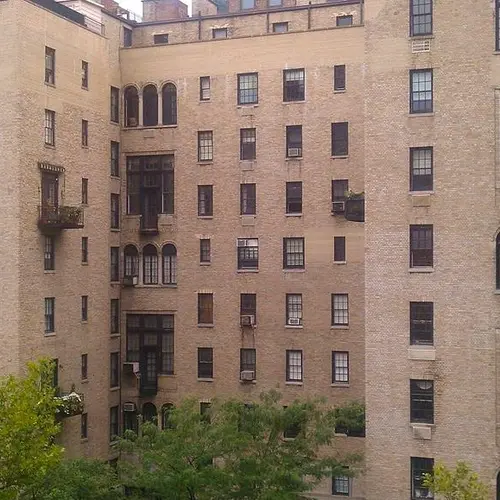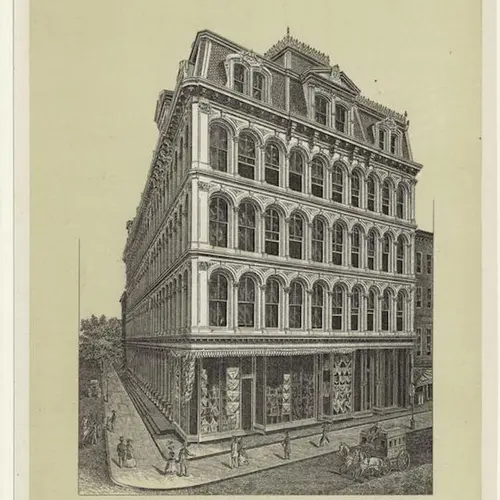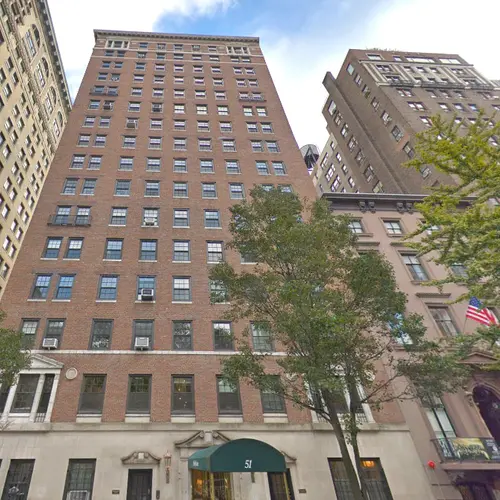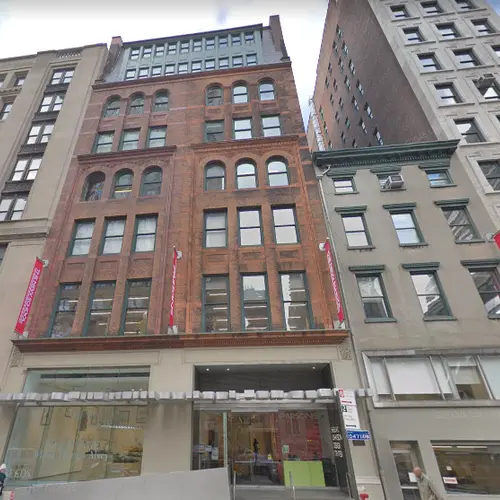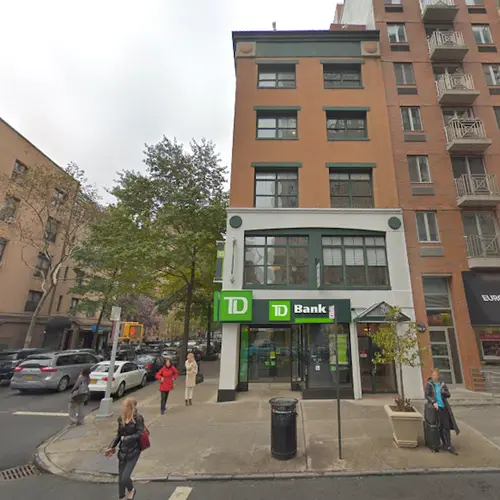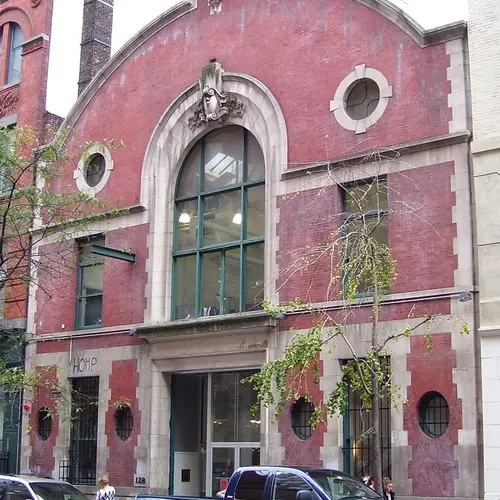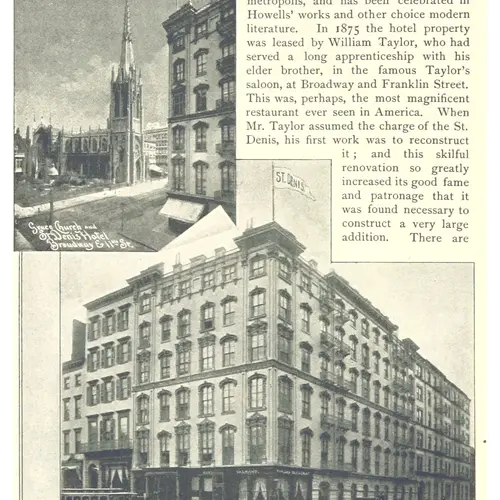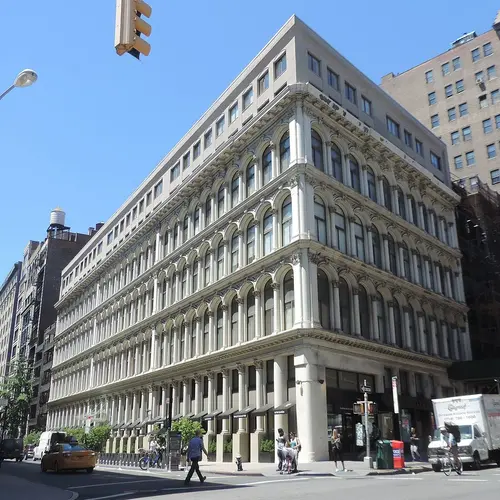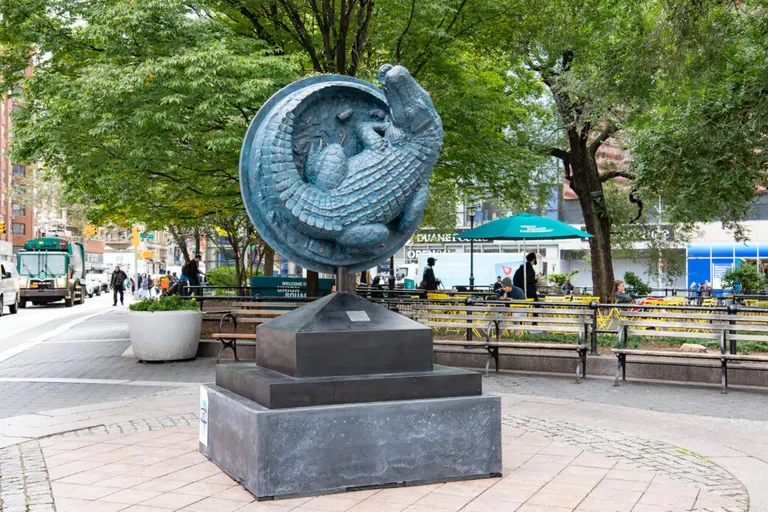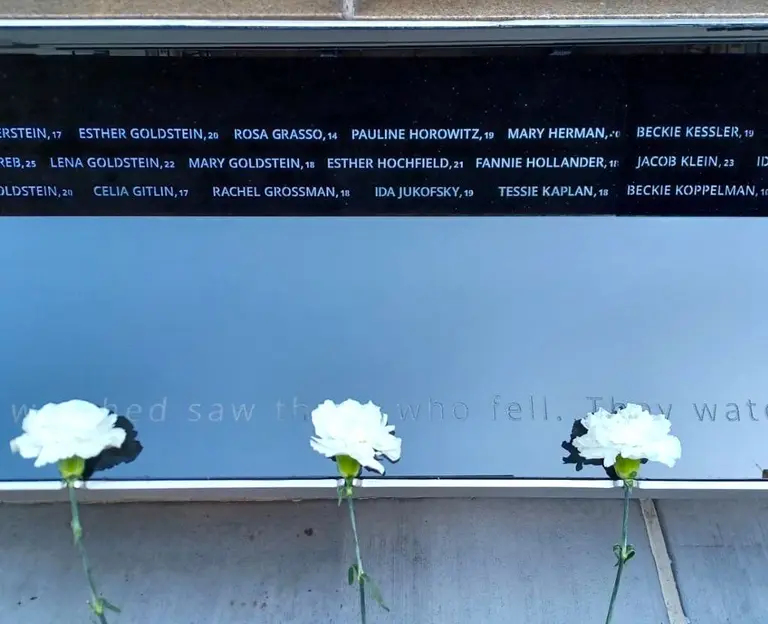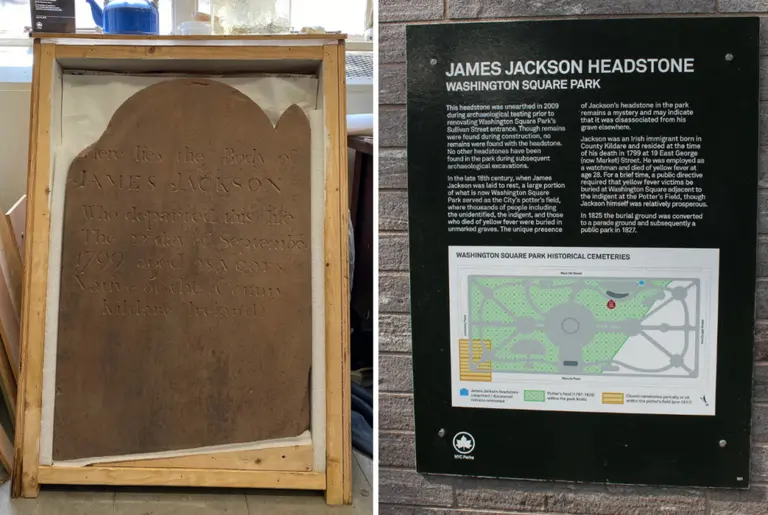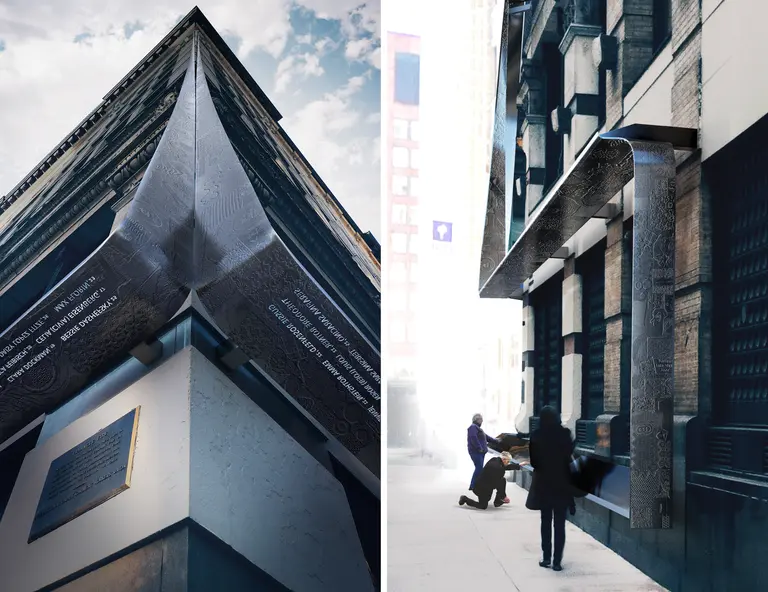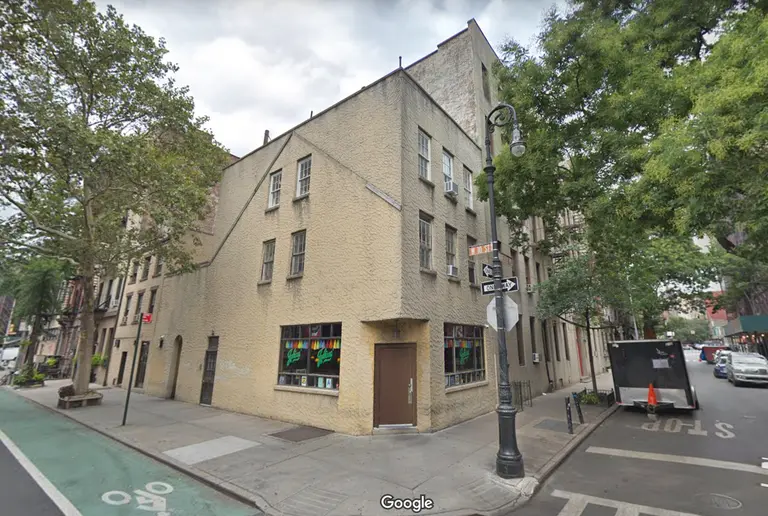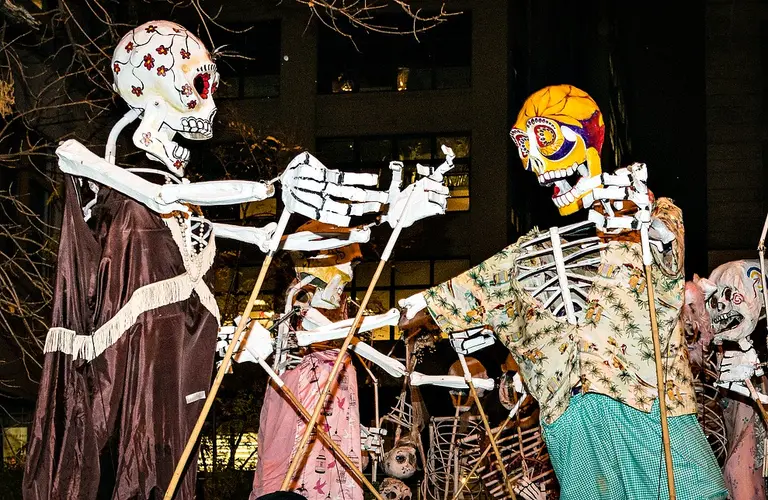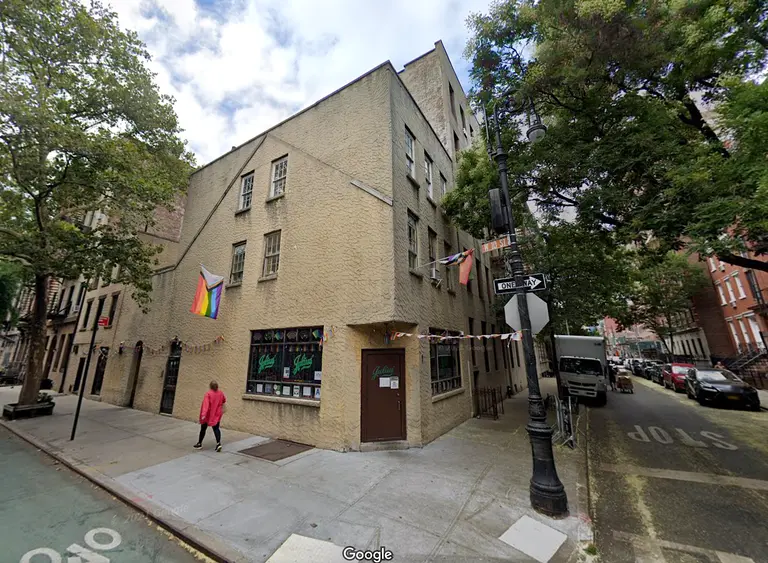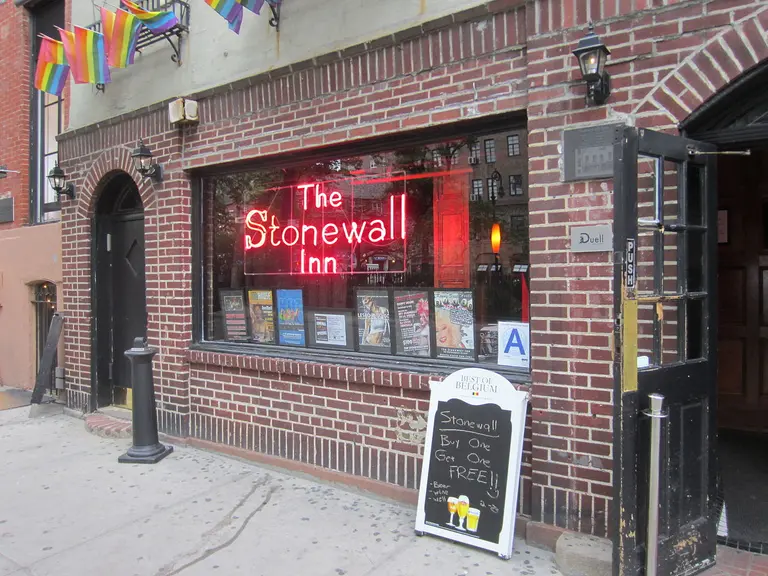From Mark Twain and the Lovin’ Spoonful to Tech Hub: The overlooked history of Union Square South
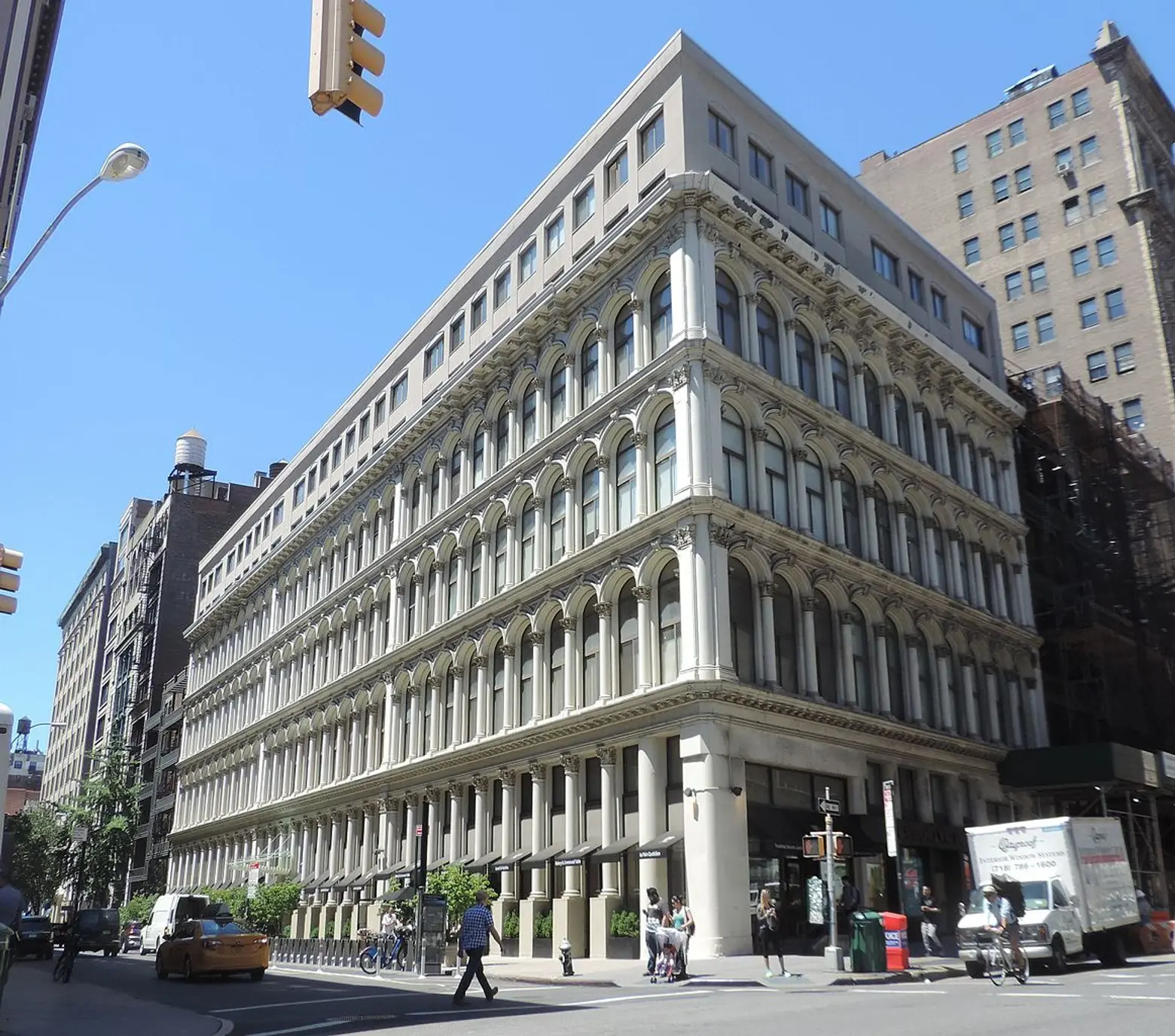
Photo of 801 Broadway by Jim Henderson via Wikimedia Commons
Straddling Greenwich Village and the East Village, the neighborhood south of Union Square between Fifth and Third Avenues was once a center of groundbreaking commercial innovations, radical leftist politics, and the artistic avant-garde. With the city’s recent decision to allow an upzoning for a “Tech Hub” on the neighborhood’s doorstep on 14th Street, there are concerns that the resilient and architecturally intact neighborhood may face irreversible change. While they’re still here, take a tour of some of the many sites of remarkable cultural history, nestled in this compact neighborhood just south of one of our city’s busiest hubs.
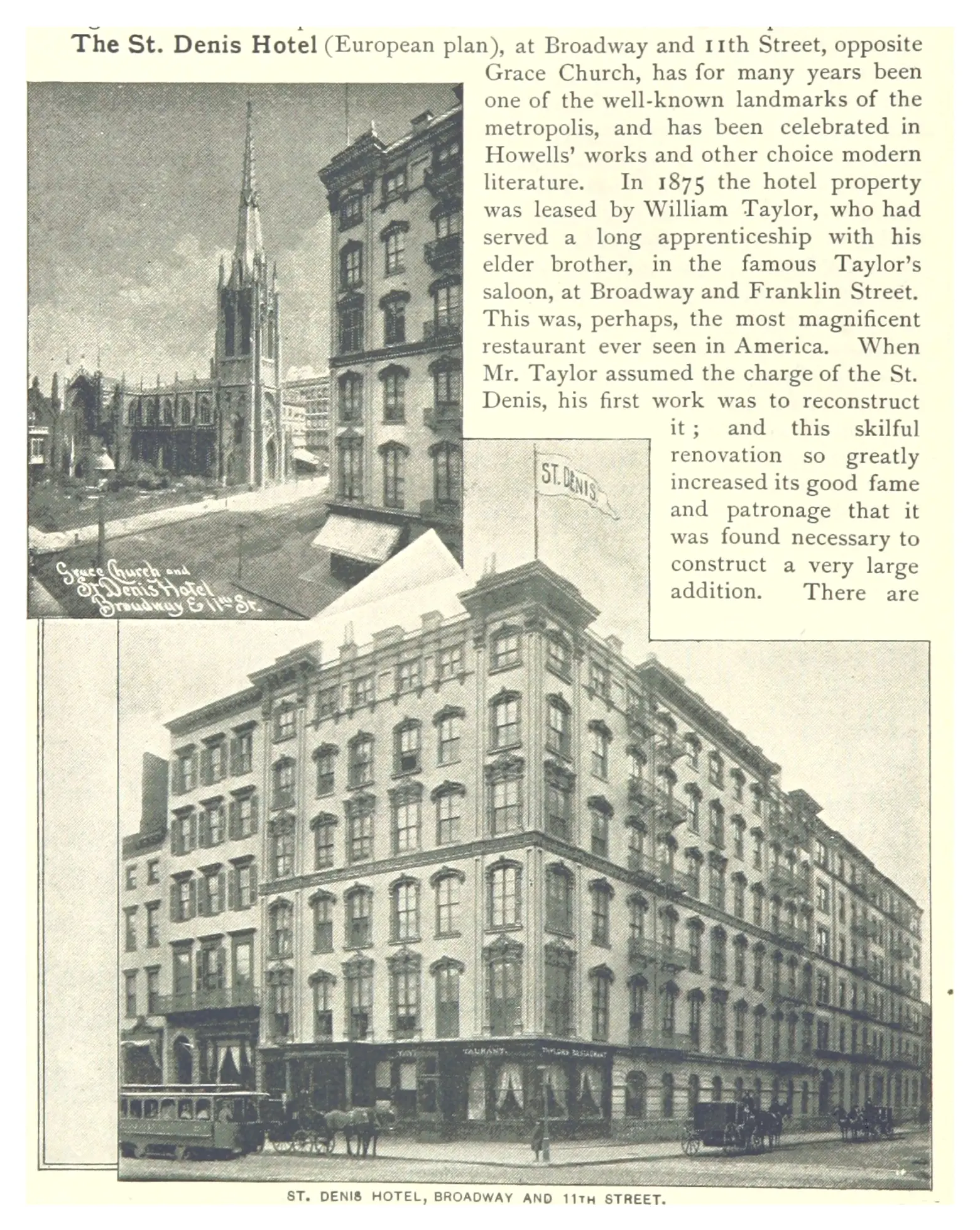 St. Denis Hotel image courtesy of British Library / Wiki Commons
St. Denis Hotel image courtesy of British Library / Wiki Commons
The former St. Denis Hotel, 799 Broadway & 80 East 12th Street
This huge site across from the landmark Grace Church was once one of the most elegant and desirable hotels in the country. Mary Todd Lincoln and possibly President Lincoln stayed there. So did Ulysses S. Grant, who was joined there by Mark Twain to help with the writing of his memoirs. Alexander Graham Bell staged the first New York demonstration of the telephone there. Sarah Bernhardt, P.T. Barnum, “Buffalo Bill” Cody, and Chester A. Arthur all stayed here in the 19th century; in the 20th century, revolutionary artist Marcel Duchamp maintained a studio there until his death in 1967, creating his final works of art within its walls.
The building also housed the offices and archives of the Lincoln Brigades, the organization of Americans who fought against the fascists in the Spanish Civil War. The building is in the process of being demolished to make way for a glass office tower.
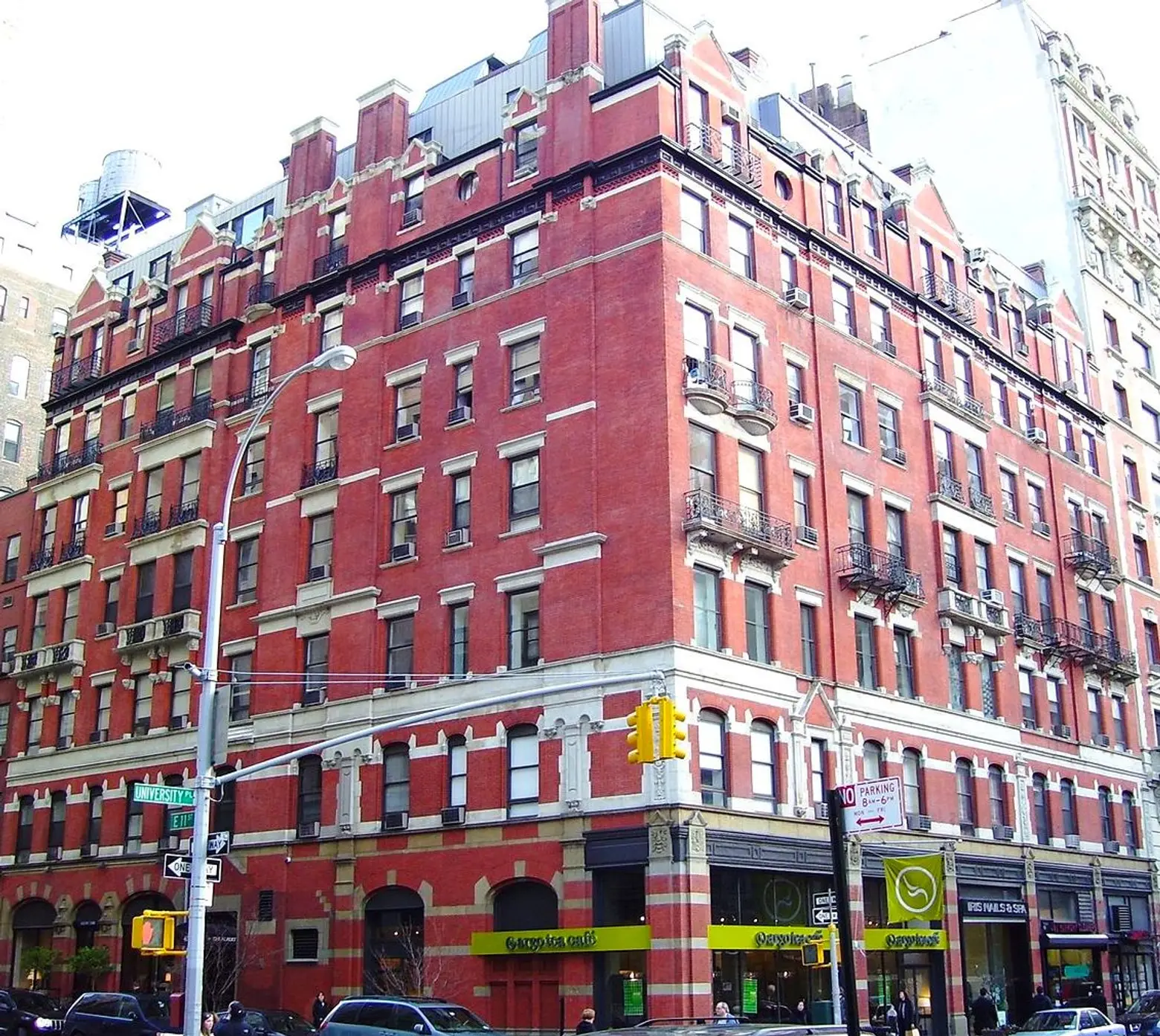
Photo by Beyond My Ken / Wikimedia
The former Albert Hotel, University Place between 10th and 11th Streets
Built in stages, the oldest building of the Albert dates to 1875, and its most prominent section was designed by venerable architect Henry J. Hardenbergh, also responsible for the Dakota and the Plaza Hotel. The hotel attracted a literary and artistic crowd from the beginning, hosting writers including Robert Louis Stevenson, Hart Crane, Thomas Wolfe, Richard Wright, Leroi Jones, Diane di Prima, Horton Foote, Anais Nin, Mark Twain, and Walt Whitman. Jackson Pollock attended dinners at the Albert in the 1940s. John Thomas Scopes stayed at the Albert in 1925 while searching for supporters for his upcoming ‘Monkey Trial’ in Tennessee.
Perhaps ironically, the Albert’s greatest period of glory may have been when it fell on its hardest times, in the 1960s. It was during this period, when the hotel had gone from glamorous to seedy, that the Mamas and the Papas and the Lovin’ Spoonful took up residence here, the former writing “California Dreamin’” and the latter “Do You Believe In Magic” during this time. Other musical luminaries of the era who spent time at the Albert include Jim Morrison, Frank Zappa and the Mothers of Invention, Carly Simon, Joni Mitchell, James Taylor, and Jonathan Richman. So prominent was the Albert and its basement rehearsal space place in rock and roll history that, according to The Rock Encyclopedia, “The basement became a shrine…no musician feels he’s a musician unless he’s stayed at the Albert and rehearsed among the pools of water and cockroaches.” The Albert has since been converted to apartments, and while listed on the State and National Registers of Historic Places, is not landmarked.
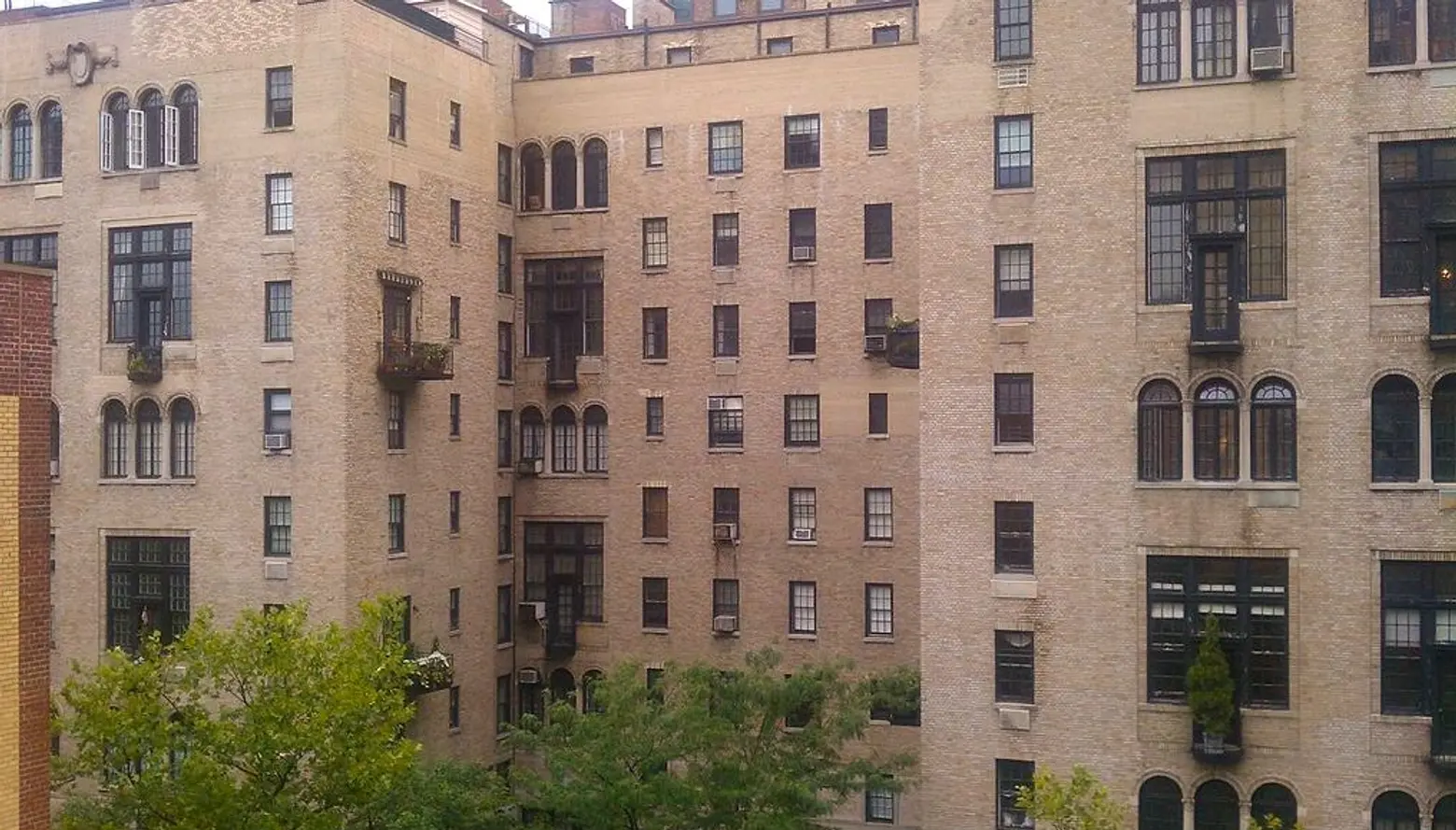
Photo by hill10003 / Wikimedia
45 East 9th Street
Hugh Ferriss and Harvey Wiley Corbett may not be household names, but students of New York history or architecture know these two men as profound shapers of early 20th century romantic visions of the city of the future. After New York passed its first in the country zoning code in 1916, architect Corbett collaborated with draftsman Ferriss to create renderings of the new possibilities for design under this regime. The images of sumptuous, setback towers, called “The Metropolis of Tomorrow,” influenced a generation of architects who created some of the most striking and memorable buildings of the era, including the Empire State and Chrysler Buildings. Ferris lived at 45 East 9th Street, part of a complex of buildings designed by Corbett in the 1920s.
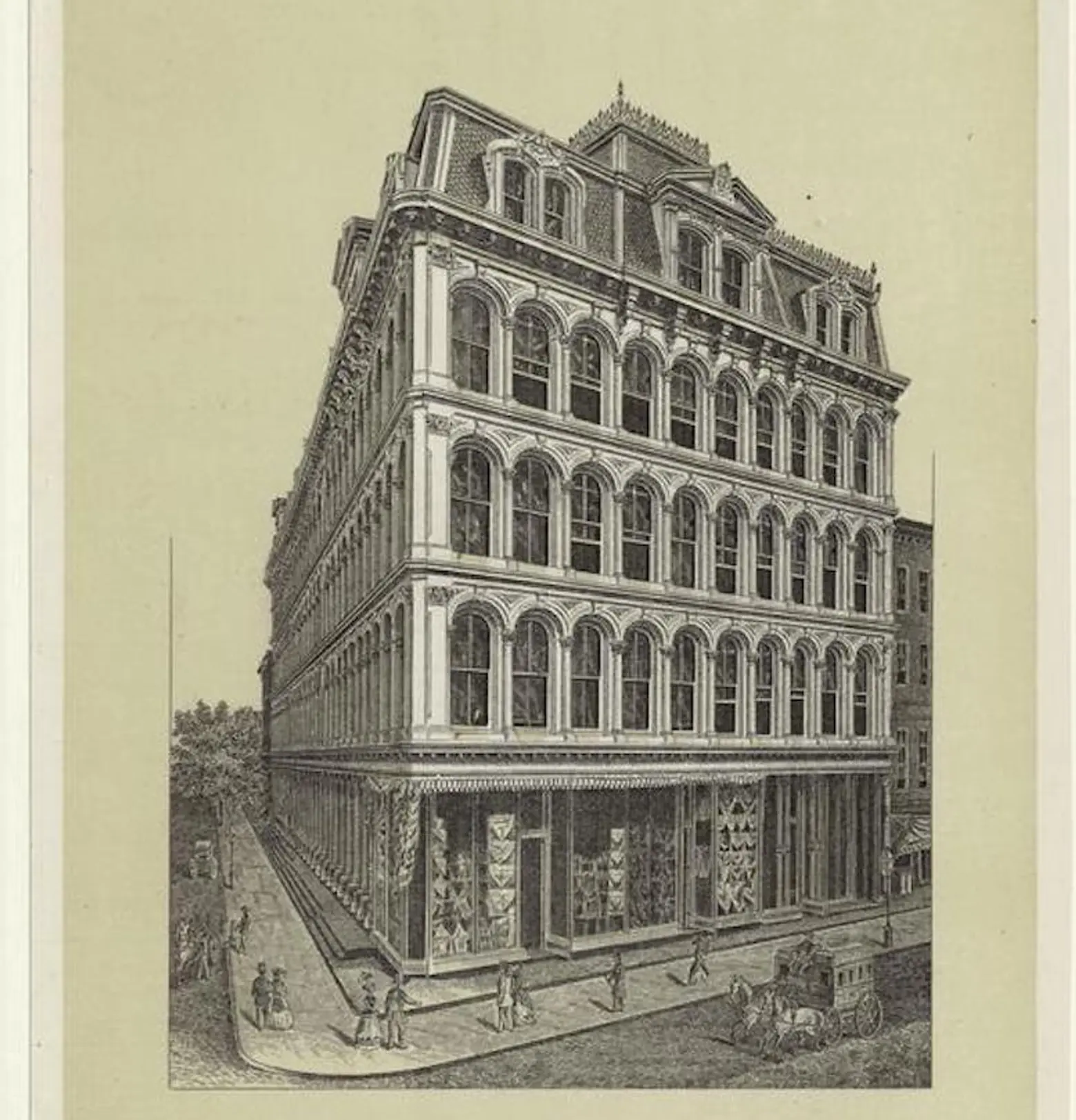
The Miriam and Ira D. Wallach Division of Art, Prints and Photographs: Picture Collection, The New York Public Library. (1869). View on the northwest corner of Broadway & 11th Str. Via NYPL
801 Broadway/67 East 11th Street
Now known as “the Cast Iron Building,” this former dry good store converted to residences deserves that singular name for its unique role in New York City history. Built in 1868 as one of the city’s premier stores, the building fell on hard times in the 20th century, with a fire that nearly destroyed the building and the loss of its original and glorious mansard roof. A high priority for early preservationists after the passage of the New York City landmarks law in 1965, a developer planned to demolish the building given the lack of manufacturing businesses interested in occupying the space. At the time, cast iron buildings could not be legally converted to residences, due to building and fire codes which deemed them too risky for such uses.
But pressure from preservationists, a more enlightened architect and developer, and some cooperative city officials led to a re-writing of these codes to allow the conversion and preservation of this building, paving the way for literally thousands of similar buildings throughout Manhattan, Brooklyn, and the other boroughs to be similarly converted and saved.
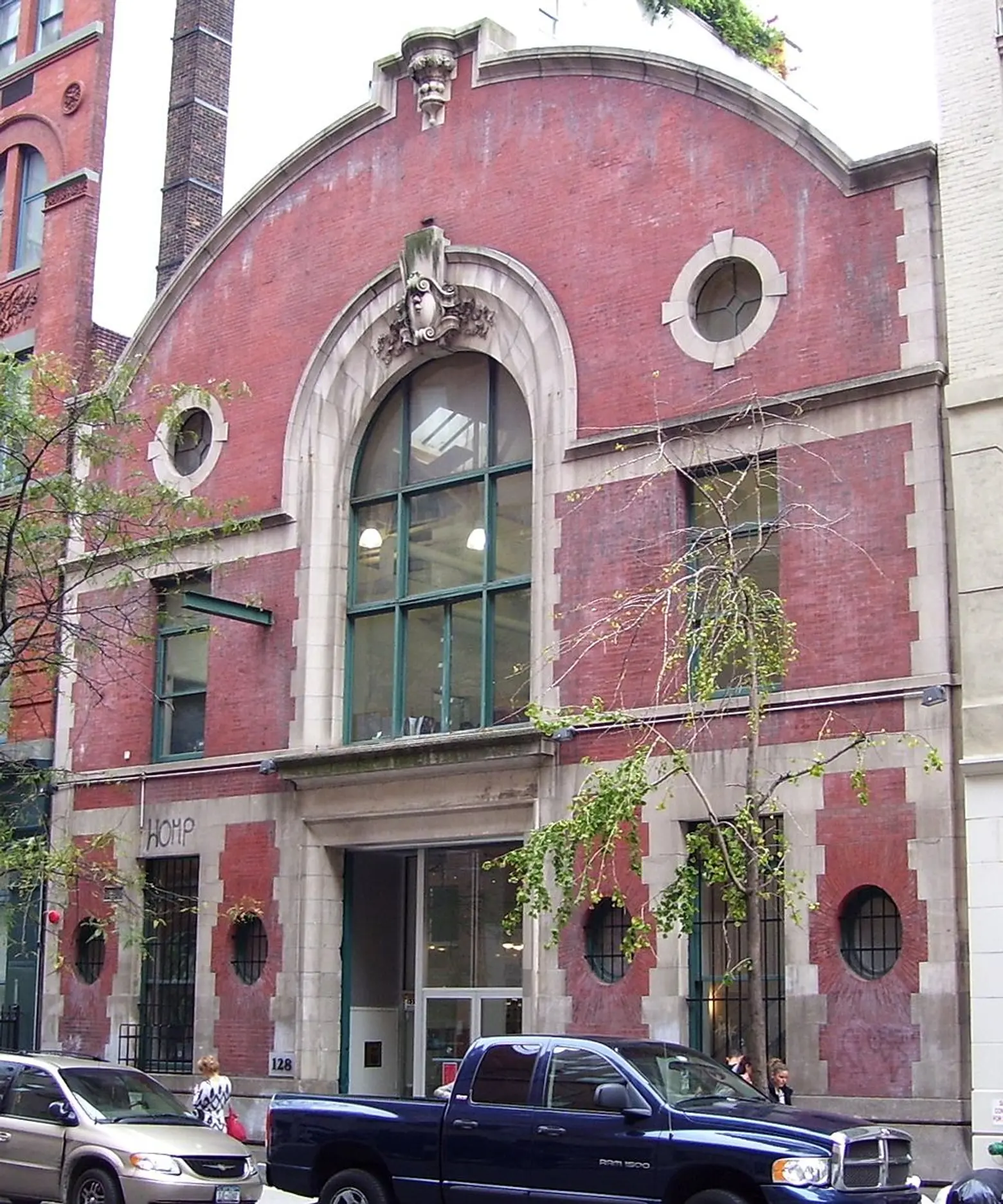 Photo by Beyond My Ken / Wiki Commons
Photo by Beyond My Ken / Wiki Commons
128 East 13th Street
From 1975 to 2005, this former horse auction mart housed the studio of artist Frank Stella. In 2006 a developer planned to replace the building with condominiums, but after a GVSHP landmarking campaign, the building was saved, and now houses Peridance Dance Studios.
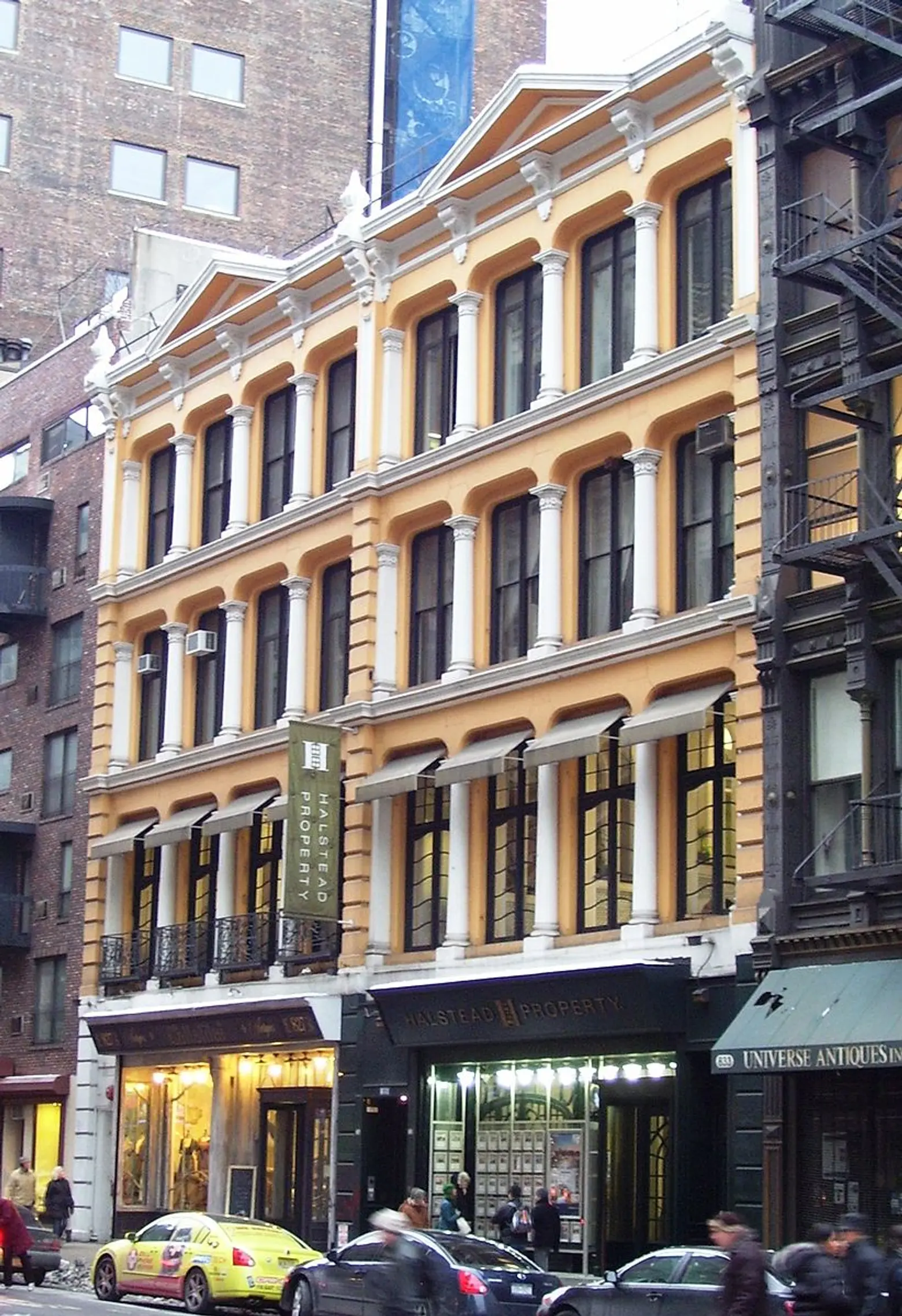
827-831 Broadway today, photo by Beyond My Ken via Wiki Commons
827-831 Broadway
Willem de Kooning had his last New York home here during one of his most productive periods, in one of the first artist’s live/work lofts in a commercial space. Elaine de Kooning painted John F. Kennedy’s presidential portrait here. MoMA director William Rubin, who defined the museum’s direction in the 1970s and ’80s, had a loft here designed by a young Richard Meier which served as a gathering place for Abstract Expressionist artists. Color Field painting school leader Jules Olitski, and painters Paul Jenkins and Larry Poons lived and worked here. Slated for demolition in 2016, the building was saved from the wrecking ball in 2017.
51 Fifth Avenue
This stately pre-war apartment building was the residence of Al Smith, the first Catholic major party (Democratic) candidate for President and the former Governor of New York. Smith and his wife moved here after his defeat in the 1928 Presidential election by Herbert Hoover.
66 Fifth Avenue
The modern dancer and choreographer Martha Graham, whose “Graham Technique” reshaped dance and is still taught worldwide, maintained her dance studio in this building in the 1930s and 40s.
11 East 12th Street
The great chronicler of life for the average New Yorker, the artist Reginald Marsh, maintained a studio at 11 East 12th Street in the early 1930s.
90-92 University Place
The celebrated “New York School” poet Frank O’Hara lived here in the late 1950s during the height of his career.
80 University Place
In the late 19th century, this building housed the home and office the America’s first female doctor, Elizabeth Blackwell.
61 Fourth Avenue
In 1955, this became the studio of artist Robert Indiana. In the late 1950s and early 1060s, it was also the home of the influential Reuben Gallery, where “The Happening” was first introduced. For many years until his death in 2012, the revolutionary publisher Barney Rosset also lived here.
88 East 10th Street
In the 1950s this was the home and studio of artist Willem de Kooning. It is also the sole intact building from what was once the 10th Street Gallery row, a collection of artist-run galleries which were the center of the New York art world in the 1950s.
35 East 12th Street
In the early 20th century this building housed the headquarters for the Communist Party of the United States; the office of Earl Browder; the party’s general secretary and a presidential candidate; the plant of the Daily Worker, the official communist daily paper; the Jewish Daily Freiheit, the Jewish communist paper; the Communist Worker’s bookshop and workers school; the Young Communist League; and the National Negro Congress.
RELATED:
- The backstory on backhouses: How NYC’s hidden rear residences came to be
- Remembering Soho’s Tunnel Garage: An automobile age marvel
- Open House New York in Greenwich Village: The history of three unique sites
+++
This post comes from the Greenwich Village Society for Historic Preservation. Since 1980, GVSHP has been the community’s leading advocate for preserving the cultural and architectural heritage of Greenwich Village, the East Village, and Noho, working to prevent inappropriate development, expand landmark protection, and create programming for adults and children that promotes these neighborhoods’ unique historic features. Read more history pieces on their blog Off the Grid

